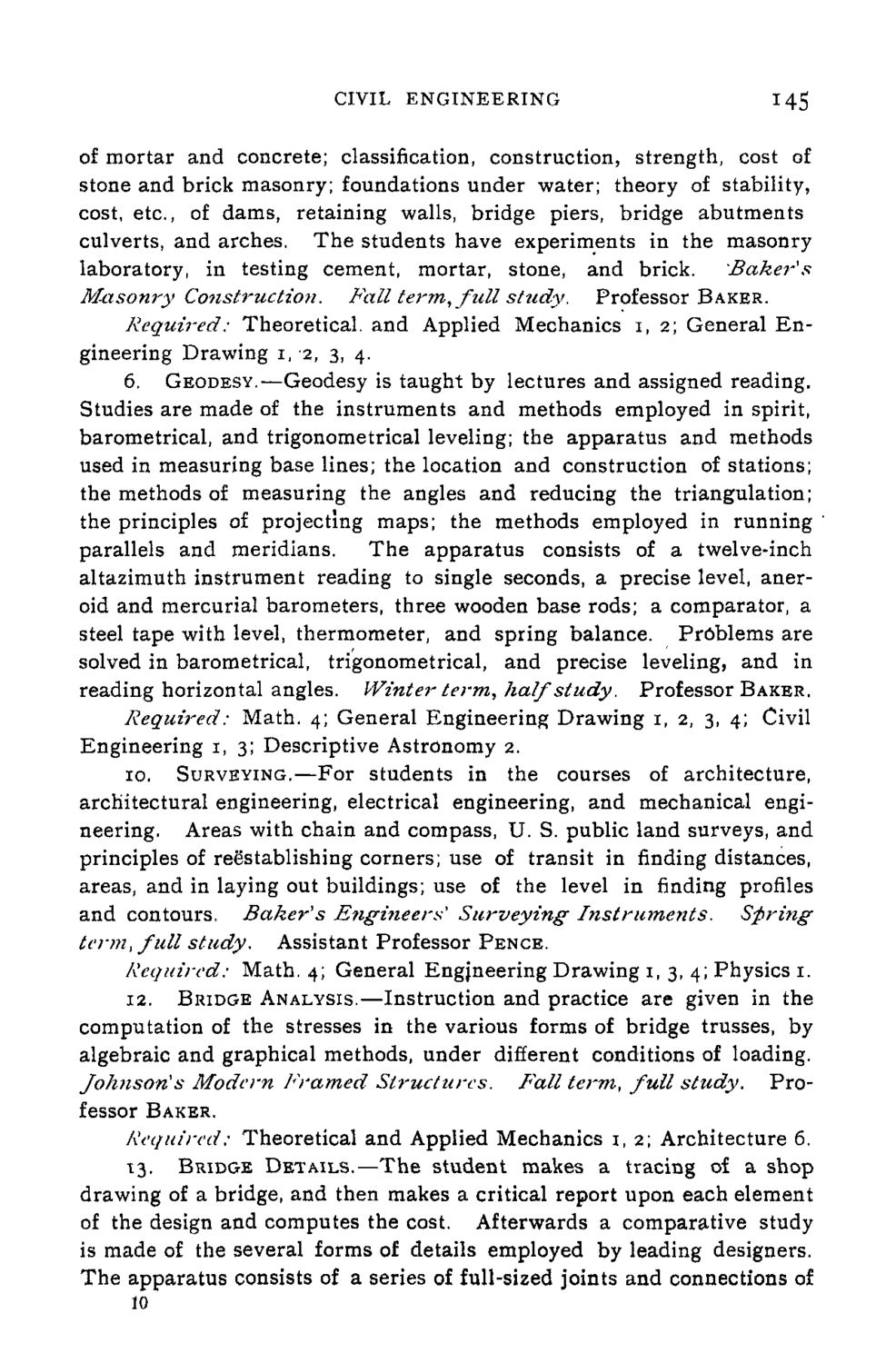| |
| |
Caption: Course Catalog - 1896-1897
This is a reduced-resolution page image for fast online browsing.

EXTRACTED TEXT FROM PAGE:
CIVIL ENGINEERING 145 of mortar and concrete; classification, construction, strength, cost of stone and brick masonry; foundations under water; theory of stability, cost, etc., of dams, retaining walls, bridge piers, bridge abutments culverts, and arches. The students have experiments in the masonry laboratory, in testing cement, mortar, stone, and brick. Baker's M-asonry Construction. Fall term, full study. Professor BAKER. Required: Theoretical, and Applied Mechanics i, 2; General Engineering Drawing i, 2, 3, 4. 6. GEODESY.—Geodesy is taught by lectures and assigned reading. Studies are made of the instruments and methods employed in spirit, barometrical, and trigonometrical leveling; the apparatus and methods used in measuring base lines; the location and construction of stations; the methods of measuring the angles and reducing the triangulation; the principles of projecting maps; the methods employed in running ' parallels and meridians. The apparatus consists of a twelve-inch altazimuth instrument reading to single seconds, a precise level, aneroid and mercurial barometers, three wooden base rods; a comparator, a steel tape with level, thermometer, and spring balance. Problems are solved in barometrical, trigonometrical, and precise leveling, and in reading horizontal angles. Winter term, half study. Professor BAKER. Required: Math. 4; General Engineering Drawing 1, 2, 3, 4; Civil Engineering 1, 3; Descriptive Astronomy 2. 10. SURVEYING.—For students in the courses of architecture, architectural engineering, electrical engineering, and mechanical engineering. Areas with chain and compass, U. S. public land surveys, and principles of reestablishing corners; use of transit in finding distances, areas, and in laying out buildings; use of the level in finding profiles and contours. Baker's Engineers' Surveying Instruments. Springterm, full study. Assistant Professor PENCE. Required: Math. 4; General Engineering Drawing 1, 3, 4; Physics 1. 12. BRIDGE ANALYSIS.—Instruction and practice are given in the computation of the stresses in the various forms of bridge trusses, by algebraic and graphical methods, under different conditions of loading. Johnson's Modern Framed Structures. Fall term, full study. Professor BAKER. Required: Theoretical and Applied Mechanics 1,2; Architecture 6. 13. BRIDGE DETAILS.—The student makes a tracing of a shop drawing of a bridge, and then makes a critical report upon each element of the design and computes the cost. Afterwards a comparative study is made of the several forms of details employed by leading designers. The apparatus consists of a series of full-sized joints and connections of 10
| |